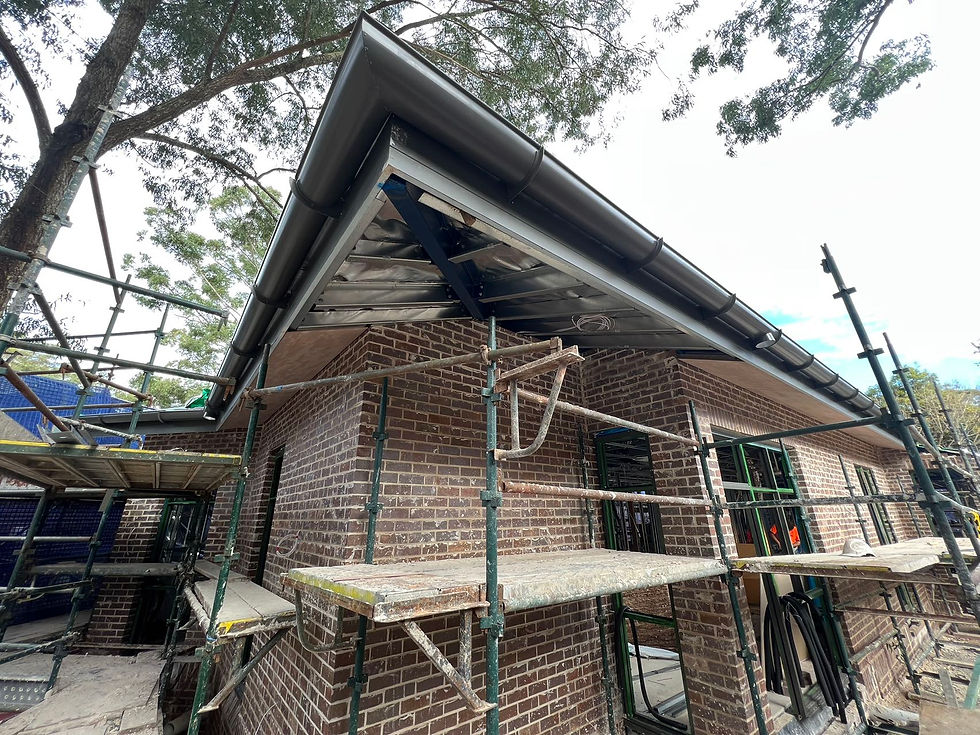Choosing Low Sheen for Fibre Cement Cladding and Soffit
- Neil Yam
- Jun 3, 2023
- 2 min read

Concerning external painting projects, the type of paint used can significantly impact the aesthetic outcome, durability, and maintenance of the painted surfaces. For example, in a recent project, our team chose the ideal paint for fibre cement cladding and soffits. After careful evaluation, we decided to use low sheen, and in this blog post, we will explain why we made this choice.
What is Low Sheen?
Before deciding, let's briefly explore what low-sheen paint is. In terms of finish, paints are typically classified into three categories: high-gloss, semi-gloss (or satin), and matte. Low sheen paint, often called 'eggshell' or 'low lustre' paint, fits between semi-gloss and matte finishes, offering a slight reflective quality without the overt shininess of glossier paints.
Why We Chose Low Sheen
The choice of paint depends on several factors, including the material being painted, the environmental conditions, and the desired visual effect. Here's why we chose low-sheen for the fibre cement cladding and soffit:
Aesthetic Appeal

Firstly, low sheen creates a subtle, sophisticated aesthetic that works incredibly well with the rough-textured nature of fibre cement cladding and soffit. It provides a delicate balance, offering a hint of shine that enhances the texture of the fibre cement without overpowering it. This results in an elegant finish that gracefully complements the architectural design.
Durability and Resistance
Low sheen is recognized for its excellent durability. They hold up well in varying weather conditions, maintaining their colour and sheen for extended periods. This is crucial when painting exterior surfaces like cladding and soffits, which are constantly exposed to sun, wind, rain, and other elements.
Moreover, fibre cement sheet is known for its longevity, rot, pests, and fire resistance. Coupling this with a durable paint-like low sheen ensures the overall resilience of the painted surfaces, leading to longer intervals between maintenance and repainting jobs.
Dirt and Stain Resistance
Low sheen is resistant to dirt and stains. In addition, unlike matte, which is porous and can trap dirt, low-sheen has a smoother finish, allowing dirt and debris to be more easily washed or wiped away. This makes them a practical choice for external surfaces where dirt accumulation is a concern.
Easy to Touch-up
Even though low-sheen is durable and resistant to dirt, no paint is immune to occasional chipping or staining. However, one advantage of low-sheen is that it's relatively easy to touch up. You can paint over the damaged area without the glaringly obvious patchwork, valid with high gloss.
Conclusion
Choosing the right paint for an external project is essential to ensuring the surfaces' longevity and aesthetic appeal. Low-sheen was ideal for our project involving fibre cement cladding and soffit, providing durability, dirt resistance, and a sophisticated finish.
As always, it's important to remember that every project has unique requirements and considerations. Therefore, what worked well for this particular project might not be the best fit for others. So constantly evaluate your options carefully before deciding on a paint type.
